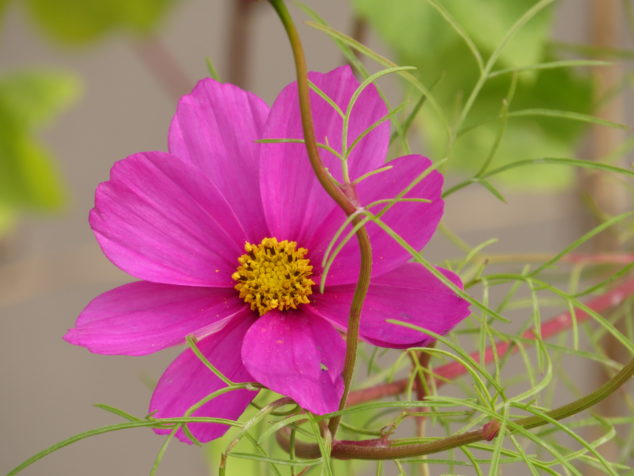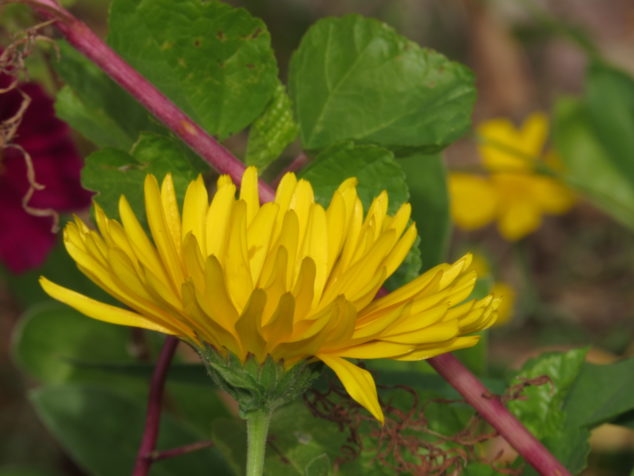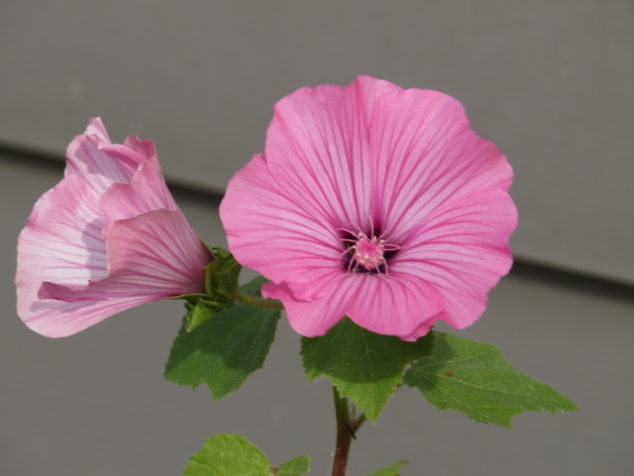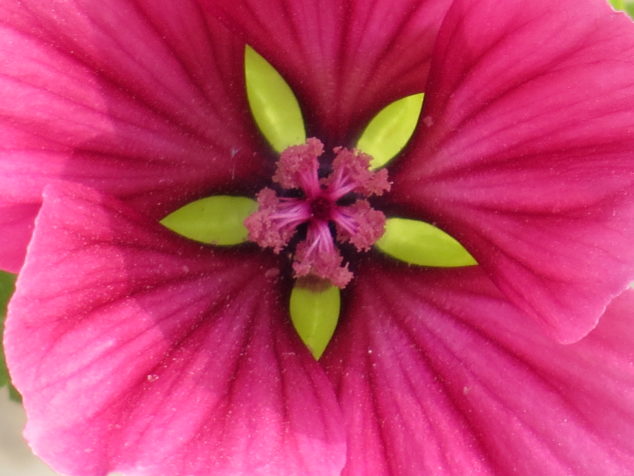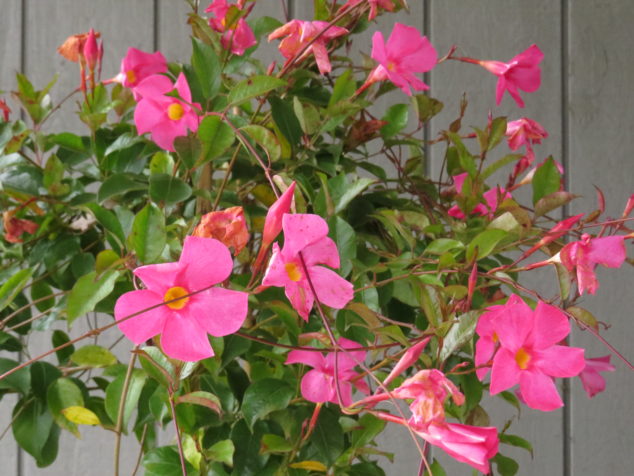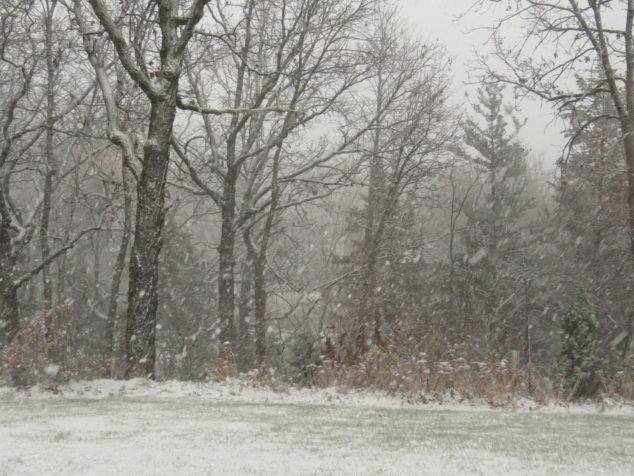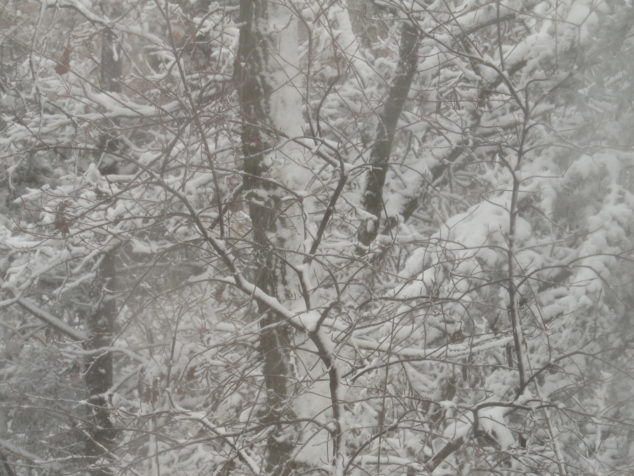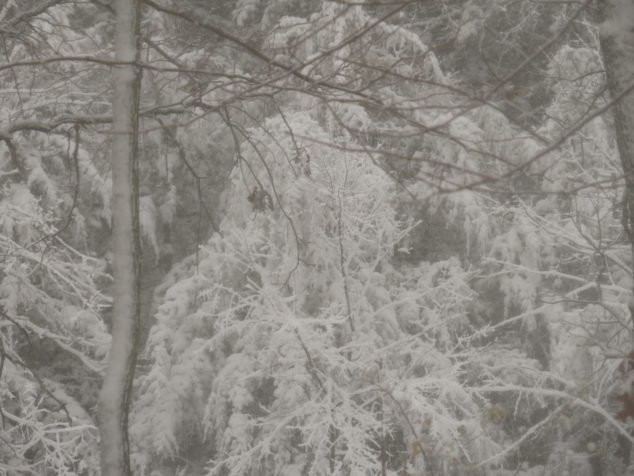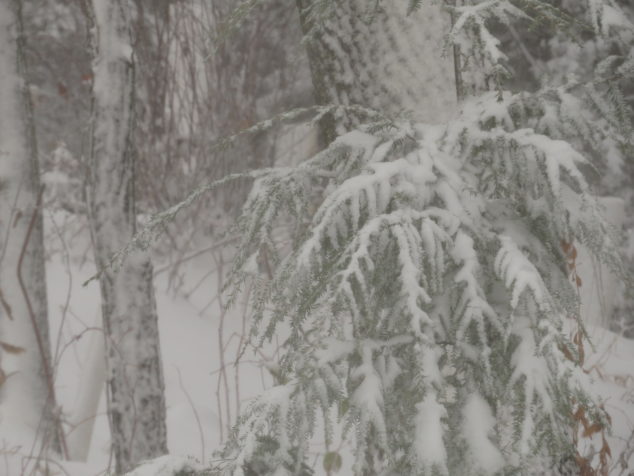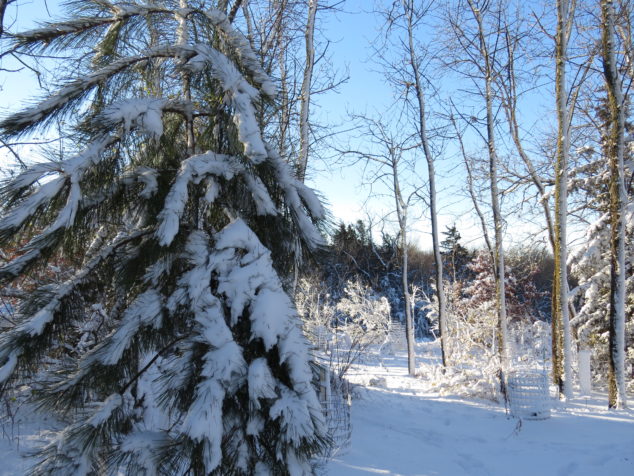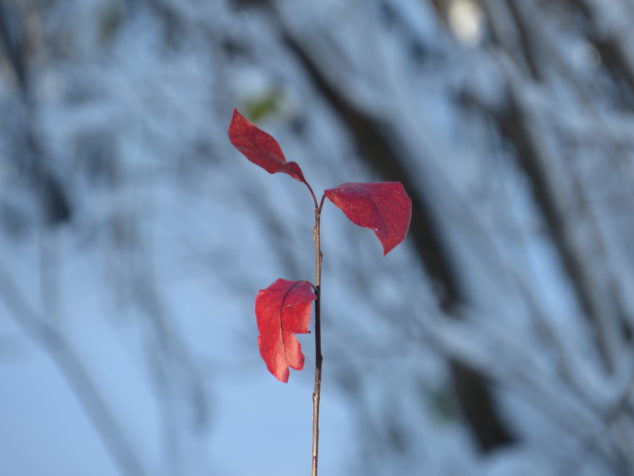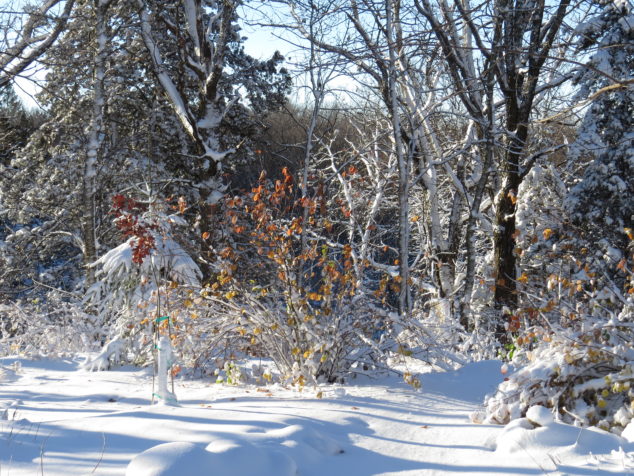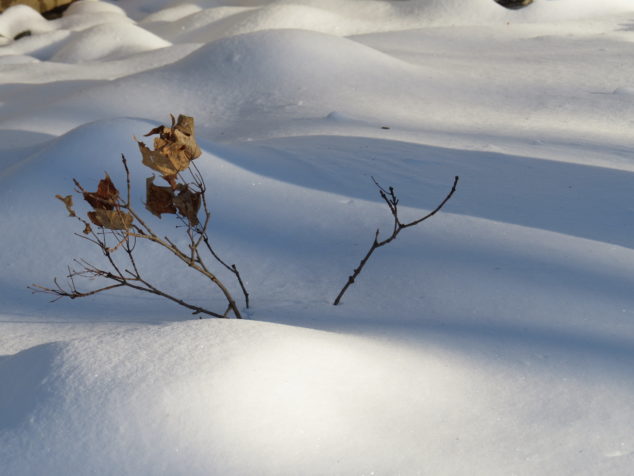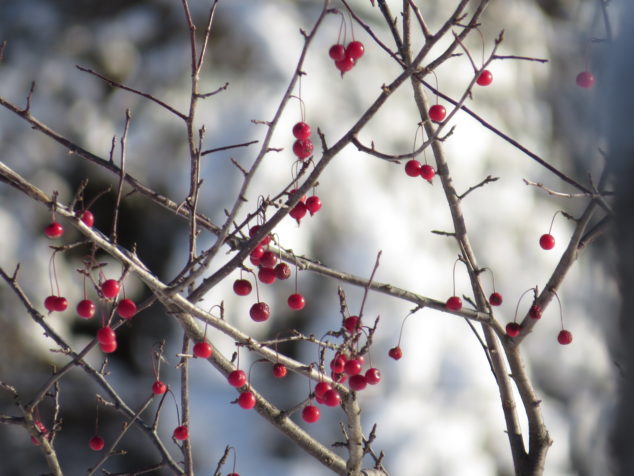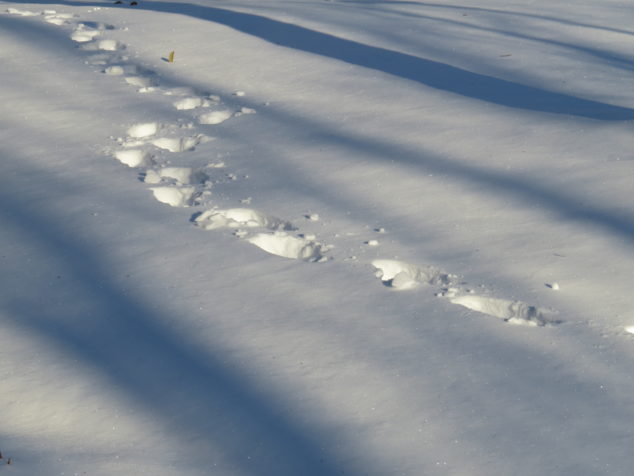It’s not normal to photograph blooming flowers on November 17th in Central Minnesota. The weather has been abnormally warm the last three weeks with daily high temperatures all above normal with most of them ten to twenty degrees higher than normal. On November 5th the high was 72—27 degrees above normal. No wonder the flowers are still blooming! We had cleaned up the garden, pulled and put away the pots of annuals, and done the other fall clean-up in our usual yearly routine. But a small raised bed of spring-seeded annuals and perennials on the southwest side of the house continued to bloom in spite of a few frosts. Cosmos, coreopsis, and hollyhocks of different colors shone on in summer fashion, while most of the fall colors around them had faded to brown.
The only potted plant that was left out in the November warmth was a tropical Mandevilla vine that had produced an abundance of pink trumpet-shaped flowers all summer long. I was sure any hint of frost would have killed it, but the warmth of being beside the house must have protected it from the light frosts.
The next day—Friday morning—rain hit the windows with a strong NNE wind. Soon the rain turned to freezing rain and sleet, and the ice pellets piled up in the grass. By mid-morning, the precipitation was a heavy, wet snow.
We were in a blizzard warning, and schools, events, and college classes were cancelled.
It snowed all day, the temperature fell, and the wind blew strong and relentlessly.
The heavy, wet snow was plastered onto the north side of the tree trunks and burdened the evergreen branches. My ‘color’ pictures showed a black and white world.
Saturday dawned clear and chilly—a normal late November day in Central Minnesota.
The brilliant blue sky ushered in the clear, Canadian air. It felt good to breathe it in.
The flowers from two days ago were folded over with ice and covered with snow. A few Autumn leaves stood boldly in the winter wonderland…
and shone like amber in the morning sun.
Fall, in the guise of Summer, has passed the torch to Winter. Temperatures will stay cooler now with a blanket of snow on the ground.
The birds will come to pick the crabapples like they normally do once snow inhibits their food gathering.
And we trek on.
Flowers blooming in 60-degree temperatures is not normal November weather here in Minnesota. Not at all. This wasn’t some rogue outlier warm-couple-of-days in the pendulum swing. This was a steady, long run of much warmer than normal temperatures that stretched the growing season of Minneapolis-St. Paul to a staggering, record-smashing 220 days. The normal growing season (consecutive days without freezing or sub-freezing temperatures) is 157 days. It’s easy to overlook the facts, because who doesn’t love blooming flowers, snow-free driving, and going outside without a coat? Climate change. Extreme weather events that are becoming commonplace—floods, drought, wildfires, earthquakes, hurricanes. Pollution. Water scarcity. It affects all of us negatively in one way or another—some much more personally than others. It’s just very hard to see on a daily basis and easy to dismiss, deny, and gloss over. I’ve worn my own blinders on various occasions—I know that denial can be a loving bedfellow that gives us what we need and want. But soon the promises of the golden eggs are unrealized, and we discover that the excited, noisy chatter coming from the coop isn’t because of golden eggs, but because there’s a weasel in the henhouse.
